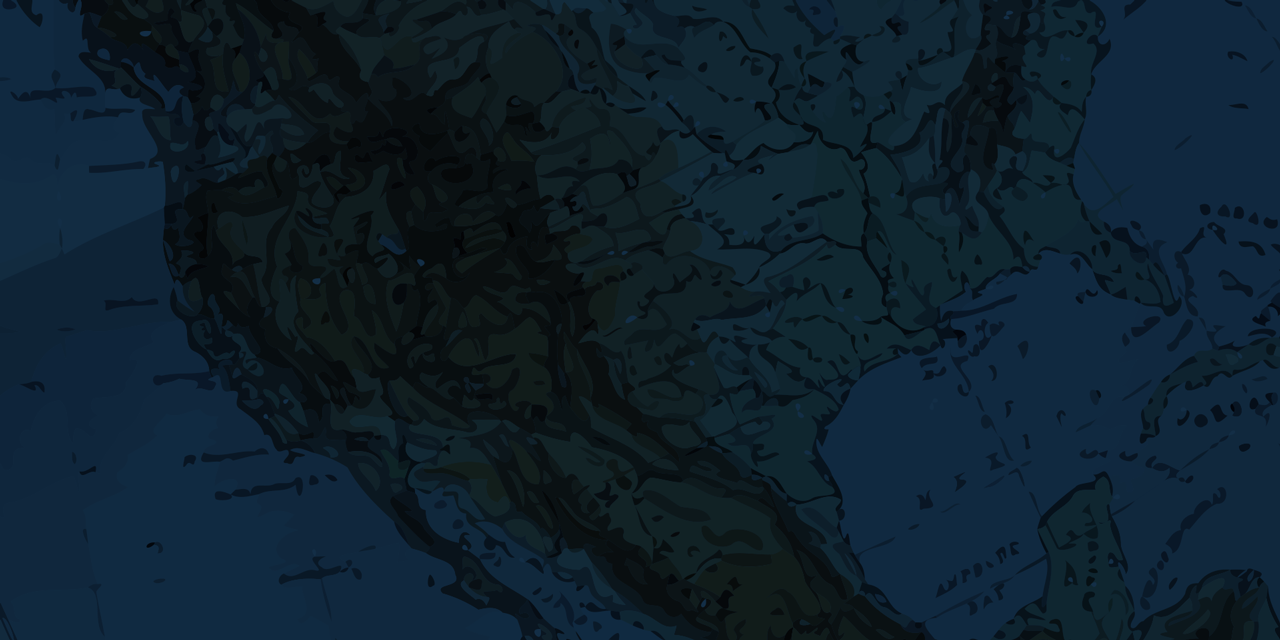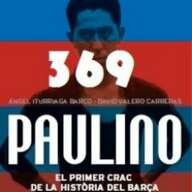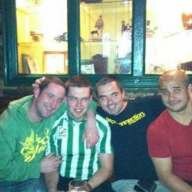history | 2015-07-11
The FC Barcelona United States tour in 1937
Much has been written about the tour of “salvation” that FC Barcelona underwent in the Americas in the summer of 1937, but if there is any shadow of a doubt about that transoceanic tour, it’s about the part of the tour that unfolded in the United States that caused an exodus when the blaugrana stars called the attention of some New York clubs against Mexican opposition. With Spain in the middle of a Civil War in 1937, the circumstances are unclear as to why the details of that epic journey to North America have survived to this day. On the contrary, the scarce information about the games played by FC Barcelona in New York is obvious in any historical piece about the club. As a consequence, there was no other remedy than to seek out the sources, that is, the archives in the United States, to be able to know with the fullest detail what occurred in those games played in the city of the skyscrapers. This investigation has allowed us to have access to data that, to date, remained hidden, buried by the passage of time between tons of paper, physical or virtual, that have accumulated over more than 75 years.
The part of the tour played in Mexico began on June 20, 1937 against Club America in Mexico City. They would later play Atlante, Real España, Necaxa (on two occasions), Asturias FC, Club America yet again, the Mexican National Team (two times), and finally, the humble Cidosa de Orizaba. The last of those games was played on August 28, more than two months after the beginning of the tour.
After the games in Mexico, FC Barcelona crossed the border in early September for a month of stay in the United States. But long before, on June 21, the first reference on the New Yorker press was recorded corresponding to FC Barcelona’s probable visit to the city of the skyscrapers. A brief news article appeared on the indicated date in the Brooklyn Daily Eagle announcing that the local team Brooklyn Hispano was trying to reach an agreement for a match against the “Spanish team from Barcelona” for the first week of August. Later, on August 6, there was talk that Hispano had signed a contract with the Catalan club to play three games in New York. Finally, on August 25, the local press stated that the dates for FC Barcelona’s visit were settled. Thus, the foreseen games were to be played on September 6 against Brooklyn Hispano, September 12 against a combined team of Brooklyn Hispano and St. Mary’s Celtic, and to finish off, on September 19 against a team representing the North American league, the American Soccer League (ASL). However, a fourth match would later be added to the calendar on September 20 against a combined team named Jewish All-Star, made up of players from both clubs of the Hebrew community of the city, Hatikvoh and Hakok.
The blaugrana players that arrived to partake in the matches in New York were the ones that began the tour in Mexico, except Martí Ventolrà, who decided to remain in Mexico. As a result, the men available were Josep Argemí, Joan Babot, Domènec Balmanya, Josep Bardina, Josep Escolà, Fernando García, Miquel Gual, Félix de los Heros, known as "Tache” and listed as “de las Heras” in several publications, Josep Iborra, Juli Munlloch, Josep Pagès, Esteve Pedrol, Joan Rafa, Joaquim Urquiaga y Ramon Zabalo. The coach was the Irishman Patrick O’Connell. The team was also accompanied by the omnipresent delegate Rossend Calvet, a fundamental person in the history of the club and former athlete of Barcelonista entity, winner of the first edition of the prestigious athletic race Jean Bouin in 1920. The North American press announced the blaugrana team affirming that the team was valued at over $250,000 – a significant sum at the time. The case of Felix de los Heros, “Tache”, stands out from the blaugrana expedition due to the fact that he had not played for FC Barcelona until just before the tour, belonging to Gimnástico de Valencia. “Tache” debuted for the Catalan club on May 16, just a month before departing for America.
At 3 in the afternoon on September 6, Labor Day, FC Barcelona played their historic first match in the United States. Their rival was Brooklyn Hispano at Commercial Field. Hispano was one of the most potent teams in those days, winning the 1936/37 ASL and, as a result, qualifying for the playoffs of the competition. In the semifinals they defeated St. Mary’s Celtic, also from Brooklyn and winner of the national division, with a scoreline of 4-3 and 3-2. In the final, Hispano fell against Kearny Scots with a scoreline of 5-3 and 3-3. Besides being runners-up of the league they reached the semifinals of the US Open Cup, the oldest competition in the nation that is still disputed to this day. The first ASL title for Brooklyn Hispano would be won years later, in the 1942/43 season, when they would achieve the double by also winning the US Open Cup.
The pitch, Commercial Field, was situated, and still is, in Brooklyn, at the intersection of the avenues East New York and Albany, and was inaugurated in 1906. Today it is a sports complex with artificial turf named Hamilton Metz Field.
The attendance for the match was 6,000 people, nearly reaching full capacity. The lineups were as follows:
Brooklyn Hispano: Joe Carena (GK), Mario Brandolini, Al Burroughs, Olmedo, Rodríguez, Trabanco, Bernstein, Hansen, Fabri Salcedo, Fernández y José Aja. Bisioni and Enrico Quinones would be substituted later on for Bernstein and Hansen, respectively.
FC Barcelona: Urquiaga (GK), Zabalo, Rafa, Argemí, García, Balmanya, Munlloch, Escolà, Gual, “Tache” and Pagès.
One of Brooklyn’s stars was the center forward, Fabricio “Fabri” Salcedo, an immigrant who arrived in the United States when he was 15 years old and was able to make his living playing soccer. Before playing for Brooklyn Hispano he played for smaller teams such as Segura Club, Madrid FC, and the Portuguese Victoria, but in 1934, at 20 years old, he signed for the great team of Brooklyn. In his time at the club he played there for four seasons and in 1938 he would play for Chicago Manhattan Beer, Kerny Scots, and Danish Americans. In 1939 he returned to Hispano and remained there until 1947. In his final season as a professional, 1947/48, he played for Philadelphia Americans. In 1935, he played an international match wearing the colors of the United States against Scotland. During his career he won two league titles (1943 and 1948), two US Open Cups (1943 and 1944), and was the top scorer of the league three times (1937/38, 1940/41, 1945/46). His top-scoring season was in the 1940/41 season, where he scored 30 goals in 16 games. His significance was so important to North American football that he was inducted in into the Hall of Fame in 2005.
Returning to the match between Barça and Hispano, the first goal was scored by the local forward José Aja, 10 minutes into the match. The joy of the Americans was short-lived, three minutes later the blaugrana equalized thanks to “Tache”, nicknamed “Heros” by the New Yorker press, a diminished and somber version of his surname de los Heros. In the 42nd minute, a goal from Gual would put Barcelona ahead. In the second half, a brace from Escolà would widen the advantage for Barça, and José Aja would score the final goal in the 2-4 win for Barcelona.
The press emphasized that the kickoff would be taken by the Spanish ambassador Fernando de los Ríos, sent from Washington for the occasion. According to Rossend Calvet, FC Barcelona was considered a representation of the Republic during the tour in those days of the fight against fascism.
On September 12, the second game of the tour was played, also at Brooklyn’s Commercial Field. Once again, the public turnout was excellent; over 5,000 spectators nearly filled the stadium. The second rival was a combined team of two of the most potent teams of the ASL: Brooklyn Hispano and St. Mary’s Celtic.
The lineups were as follows:
Combined team: R. Rodríguez (GK), Kelso, Al Burroughs, Wyles, A. Rodríguez, Alex Weir, Salcedo, Steele, José Aja, Caesar de Rostaing y Tage Nilsson. Carena would come on for the keeper, Olmedo and Bernstein on for Wyles and Steele, respectively.
FC Barcelona: Urquiaga (GK), Zabalo, Rafa, Argemí, García, Balmanya, Munlloch, Escolà, Gual, “Tache” y Pagès.
The first goal was quickly scored five minutes after kickoff by Miquel Gual thanks to a header from a corner taken by Pagès. Near the end of the first half, the prolific José Aja tied the game thanks to an assist from Nilsson, but just before halftime, Pagès would put the Catalans ahead, taking advantage of Escolà’s blocked shot. Soon after the second half began, Fabri Salcedo was able to score for FC Barcelona. The surprise occurred when, with a shot into the upper corner, Tage Nilsson put the North Americans ahead. A later goal from Escolà would restore the tie, and later, 10 minutes from the end of the match, Pagès scored again, giving Barca the definitive victory 4-3.
The third game of the series would be played as planned in the afternoon of September 19. Once again, the ground was Brooklyn’s Commercial Field with a magnificent turnout of 5,500 spectators. The rival was a team representing the ASL with six different teams from five different cities (New York, Newark, Paterson, Philadelphia, and Baltimore).
The lineups were as follows:
ASL: Cengia (GK), Kelso, Zbikowski, Dick, Briscoe, Harris, De Vivo, Munro, Charley Ernst, O’Brien y Chappie Sheppell. Davis, Eddy Czerkewiecz, Zell, and Fisher would come on for the goalkeeper Cengia, Briscoe, Munro, and O’Brien, respectively.
FC Barcelona: Urquiaga (GK), Zabalo, Rafa, Argemí, García, Balmanya, Munlloch, Escolà, Gual, “Tache” y Pagès. Iborra, Babot, and three minutes from the end, Bardina would come on for Urguiaga, Rafa, and Gual, who had an ankle injury, respectively.
Of the 11 American players, one that stood out was Charley Ernst, the top goalscorer of the league in the previous season, scoring 25 goals for Baltimore SC. This same player would repeat his feat in the 1939/40 season, scoring 24 goals for the same club. Another remarkable forward was Chappie Sheppell, who would be the top goalscorer in the 1942/43 season for Kearny Celtic.
In the third match the score was opened up by Pagès in the 12th minute after taking advantage of a pass from Gual. Thirty minutes into the match an unusual event occurred: the crossbar of the goal FC Barcelona was attacking broke. According to reports of the event there were no people injured because of the incident, but the game was delayed 15 minutes until the goal was reassembled. Five minutes after the match was resumed, Gual scored once again to sentence the match with a second goal from a pass from Munlloch.
The match served Miquel Gual to be the protagonist of a column in the New York Evening Post, in which his professional career was reviewed and his talent as a center forward was lauded. The article began by saying: “Two thousand five hundred soccer fans can’t be wrong: the talent of Miquel Gual, the brilliant goalscoring center forward of FC Barcelona, is still in the mouths of everyone.” Later they would summarize his career in these words: “Gual, who is considered one of the top center forwards in Spain, was born in Barcelona 25 years ago. He stands at 5 feet 10 inches and weighs 170 pounds. At the age of 15 he played one season with Jupiter, and would continue to play four seasons at Sabadell FC. His performances called the attention of the famous international ex-footballer Pat O’Connell, coach of FC Barcelona (…). Gual has represented Spain in four international matches, against France, Germany, Switzerland, and Italy.”
On September 20, the last match of the tour was played, against a combined team of the two Hebrew teams of New York: Hatikvoh and Hakoak. The big news was that for the first time the game would not be played on the now habitual Commercial Field, it would be played at Dyckman Oval, in the neighborhood of Inwood, in Manhattan, near the Bronx. This arena was constructed in 1920 and initially used for skating, although there would soon be other sports. In the ‘30s it was normally used for baseball games, American football, soccer, boxing, wrestling, but above all, it was the home ground for the New York Cubans, a baseball franchise in the Negro League. Although the stadium was demolished a year after the blaugrana visit, it’s easy to find its location on a map today, given that it was inserted in a triangle bordered by 10th Avenue, Dyckman Street, and Nagle Avenue. Today the space is occupied by some imposing buildings.
The match between FC Barcelona and Jewish All-Star was played at 8:30 at night, with artificial lighting, an unusual circumstance for the Catalans. Unfortunately, the lineups for the match were not saved, but we know that the barcelonistas won 3-0 thanks to a goal from Munlloch and another two from Escolà.
Once the tour was finished, the team began its return trip, but not all the members of the expedition would be heading to Barcelona, rather, there was a considerable diversity of their destinations.
Only five players would end up in the “city of counts”: Josep Argemí, Joan Babot, Josep Pagès, Joan Rafa y Ramon Zabalo. Seven went to Mexico (besides Martí Ventolrà who had stayed there): Josep Bardina, Fernando García, Miquel Gual, Josep Iborra, Juli Munlloch, Esteve Pedrol, and Joaquim Urquiaga. Two went to France: Domènec Balmanya y Josep Escolà. And one preferred to try his luck in the United States: Félix de los Heros, “Tache”, who would sign for Brooklyn Hispano of the ASL, although he, too, would end up playing in Mexico.
Anything wrong? Send your correction.
Acknowledgments: Fernando Arrechea, Chris Edgemon, Frederic Porta, and Manel Tomàs.





 Barcelona News 24/7
Barcelona News 24/7